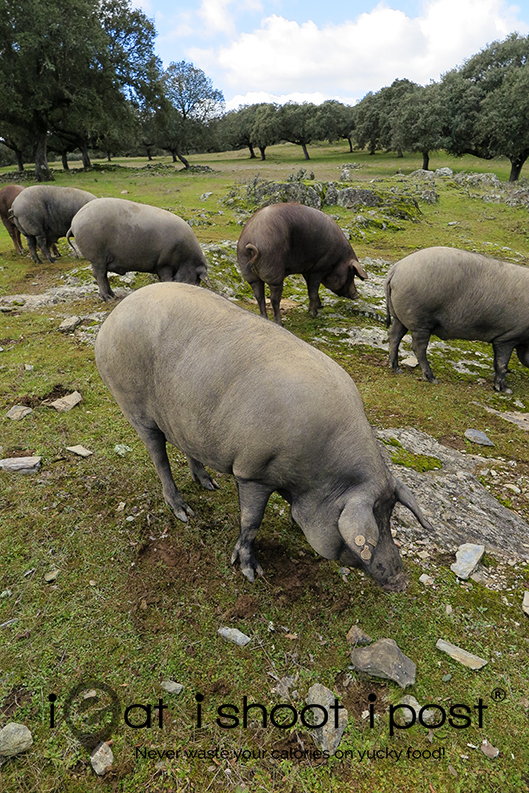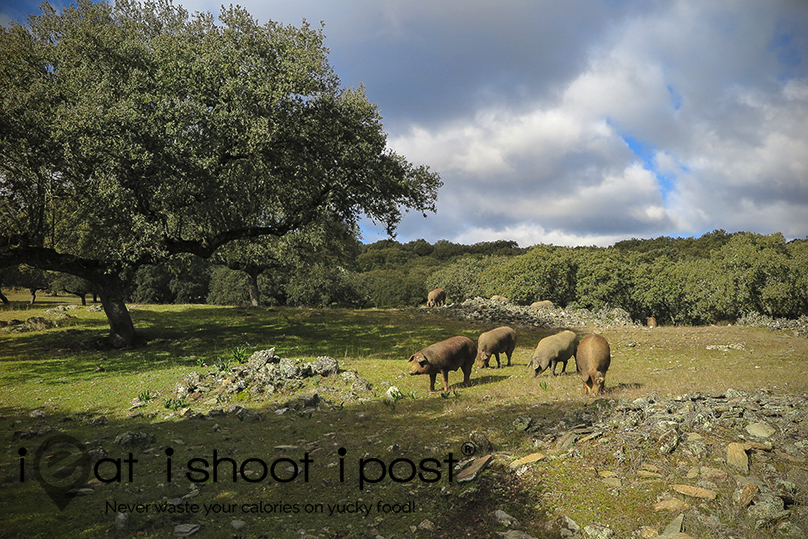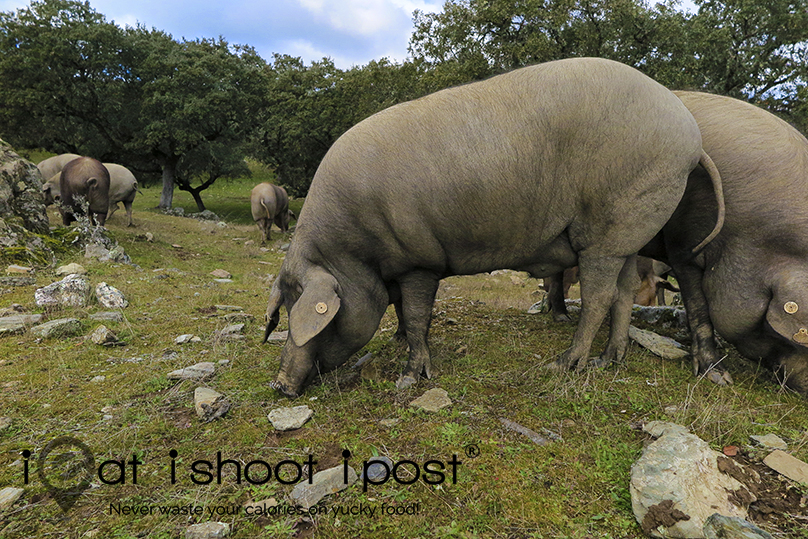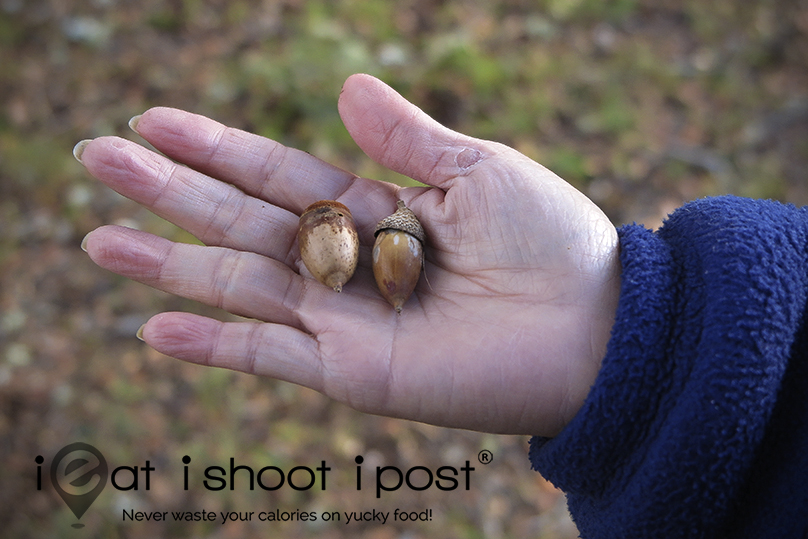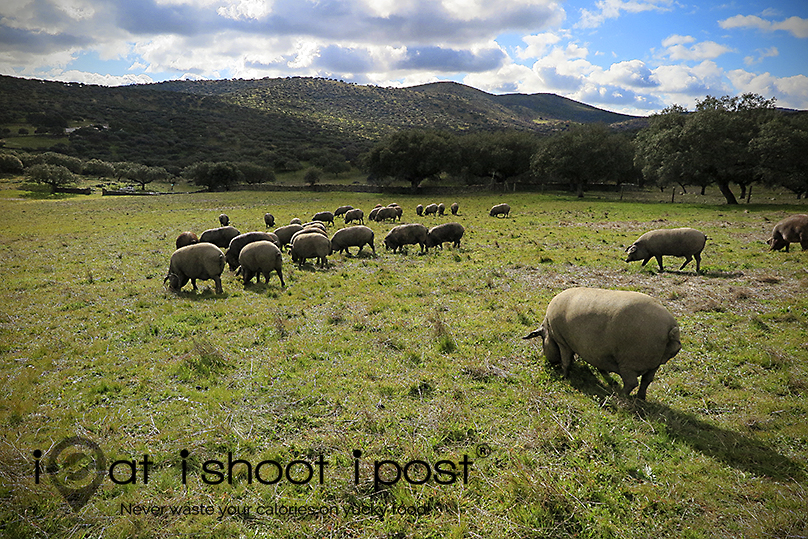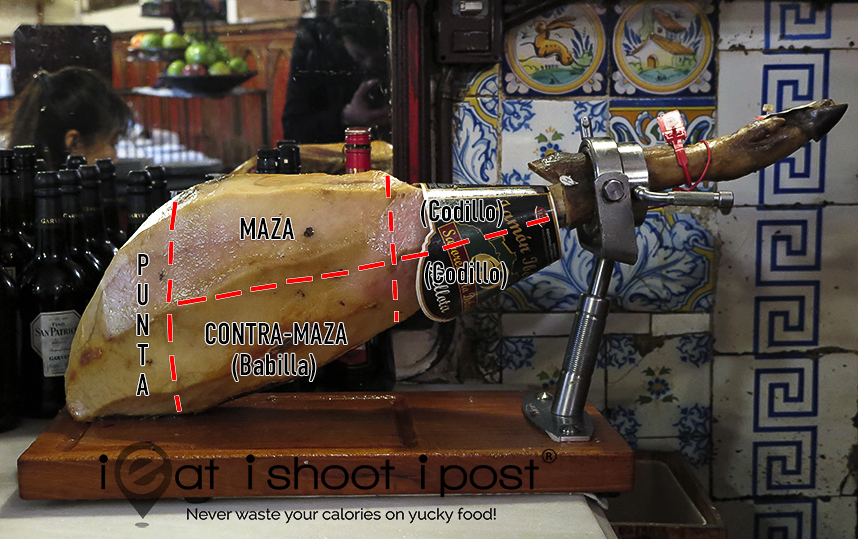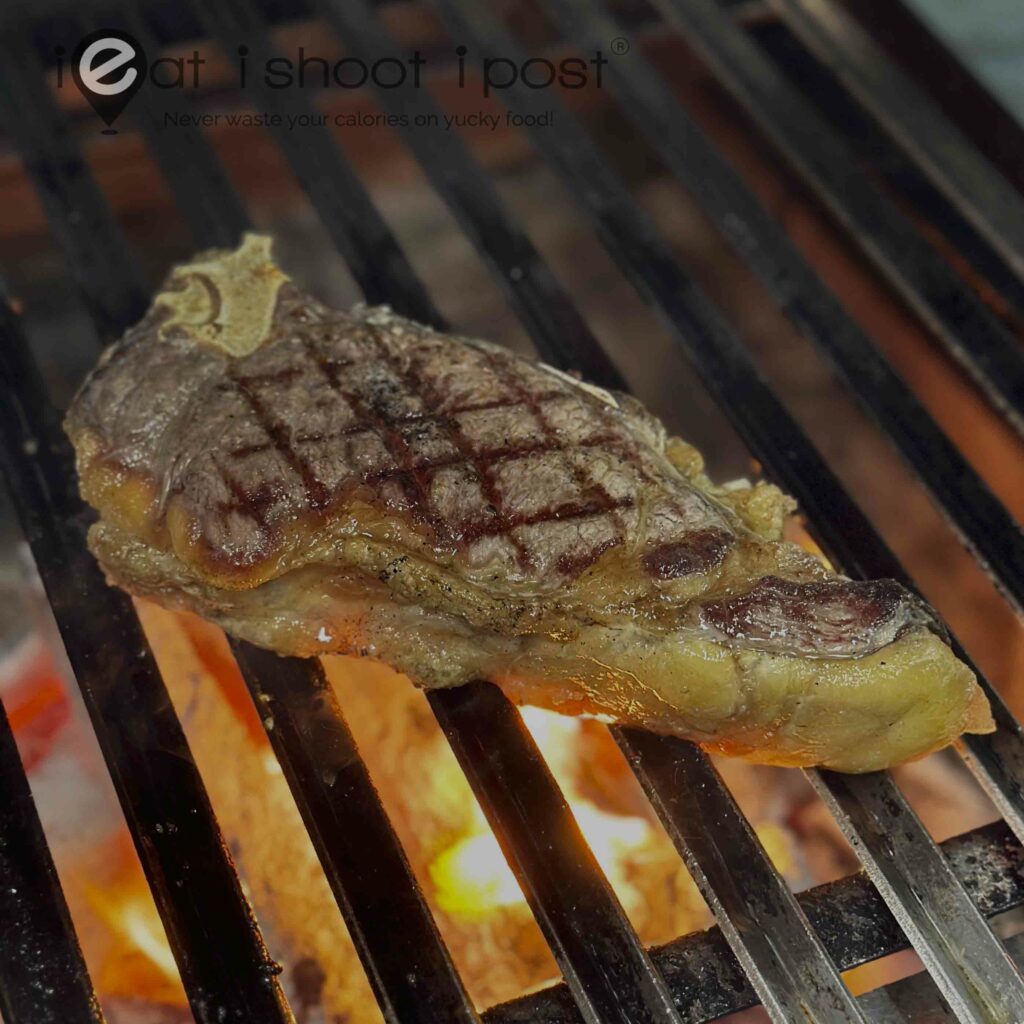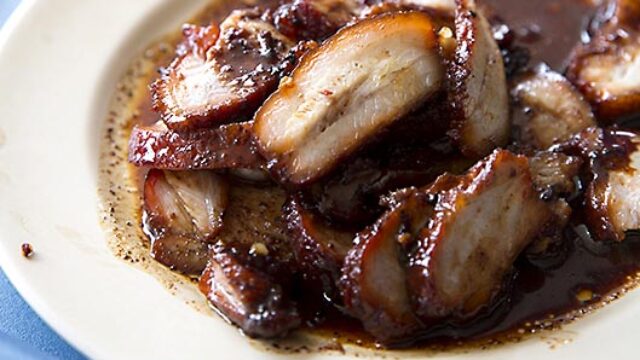I got my first taste of the Jamon Iberico de Bellota back in April 2011 at the now defunct Santi restuarant. At that time, the AVA had just approved of its importation from Spain. It was one of those moments of epiphany which every pilgrim of gastronomy is searching for.
The Jamon Iberico was presented very simply on pa amb tomaquet which is a traditional catalan dish comprising of a slice of bread rubbed with garlic and topped with chopped tomatoes and olive oil. The taste of the ham was amazing! It tasted like no other ham I have ever tasted and shot straight up onto my top ten list of the best foods God ever created, alongside truffles, foie gras, wagyu, uni, caviar and oysters.
That ephemeral moment of pleasure launched me on the quest for the Iberian pig. I really can’t explain why, but I was simply entranced by the romance of the Jamon Iberico de Bellota. Just like good wines, cheese, soy sauce and balsamic vinegar, the story of the jamon is a story of how time is the single most important ingredient in the development of deliciousness.

The story of the jamon starts with the pigs, of course. But they are not just any ordinary pigs. These are Black Iberian pigs which have lived in the Iberian Peninsular since ancient times. They are thought be the progeny of pigs which have been brought over by the Phoenicians from modern day Lebanon which have interbred with the local wild boars.
These Black Iberian pigs have a great capacity for developing intramuscular (marbling) and epidermal fat (under the skin) which results in tender and juicy meat even after its been cured for 2 years! Unlike farmed pigs that we are used to eating which are raised in confined areas, these pigs are allowed to forage freely in oak wood forests known as dehesas. During the Montanera season, ie the period from Oct to Mar when the acorns fall from the trees the pigs feast on the acorns and become really fat. The acorns not only give the subsequent jamon a rich nutty flavour but because it is rich in oleic acid, the subsequent intramuscular fats are high in monounsaturated fats which actually lower bad cholesterol!
You can tell that a slice of Jamon Iberico de Bellota is full of monounsaturated fats by just allowing it to come to room temperature. The surface of the ham will be covered with a film of oil because the melting point of monounsaturated fat is lower than that of saturated fats!
We met up with the vet who acts as the inspector for the “Dehesa de Extremadura” regulatory board which oversees the whole jamon production process. From the certification of the pigs as the correct breed to the slaughterhouse, to the control in the drying and storage sheds of the jamon, to the end product, the Board ensures that each part of the process is up to regulatory standards in order for the leg of ham to be given the “Dehesa de Extremadura” label.
Extremadura is located at the Western part of Spain bordering Portugal and is the largest producer of Jamon Iberico in Spain. As you drive through the area, you can see miles after miles of oakwood forests. I was told that the soil is so poor that only oak is hardy enough to grow on it. The importance of the Jamon Iberico extends further than just providing an extremely tasty bit of ham for Spanish. The continued demand for the ham ensures that the whole ecosystem of Extremadura is protected from industrialization. Indeed, Extramedura is one of the few places in the whole of Europe which is still largely untouched by the onslaught of development. So you are still able to catch a glimpse of what agricultural life was like in Europe centuries ago.
For a more detailed articles on the ham curing process, check out a fellow a Doctor’s four part series on Docsconz.com
(I met Dr John Sconz in Spain. Good to know there are fellow foodie doctor bloggers out there!)
During this trip to Spain, I got more in-depth information on the Jamon Iberico de Bellota which I think is pertinent for foodies who want to be taken seriously whenever you visit a Spanish restaurant. I was there to attend Madrid Fusion 2015 and they had an exhibition hall where I got to taste jamon from different producers.
The first thing you need to ask is whether the jamon is from the black pig. This is easy as all you need to do is to look at the hoof which should be black in color, hence its name in Spanish, pata negra. (black foot)
Next, you want to look for Jamon Iberico de Bellota rather than Jamon Iberico Cebo. “Bellota” means acorn in Spanish and it can only be certified Jamon Iberico de Bellota when the pigs have been foraging freely through the dehesas over two Montanera seasons. Some of the Iberian black pigs are actually fed cereals to supplement the acorns, these are designated Jamon Iberico Cebo. It is still an outstanding ham, but bellota is much more expensive than cebo, so make sure you know what you are paying for!
Now, the next bit will give you bragging rights the next time a whole leg of ham is being carved in front of you. If you are at a function where it is likely that the whole leg will be carved, then they will start with the maza (pronounced “martha”) which is the back of the thigh. This part has the most beautiful marbling and you will see streaks of fat running lengthwise along with the red muscle fibres. When you see advertisements, this is the part that will be shown because it is the most stunning. It is tender and juicy but the flavour is milder that other parts.
If you are at a restaurant where the leg of ham will be carved over a few days, they will start with the contra-maza (aka babilla pronounced “babiya”). That is because the maza is much more fatty and will be able to keep longer without drying out. The meat here is leaner than the maza.

Many experts like the punta which is the part of the ham furthest from the hoof. When the ham is hanging, this is the lowest part. As such the flavours are all concentrated here as the oil from all the other parts of the ham will drip down to this area. If the ham is good, the meat here will be great. On the other hand, if the ham is bad, the meat here is the worst! The pattern of marbling here is also more irregular and the meat here is the most tender as it is sliced across the grain.
The codillo is where the flavour is most intense but it is also the chewiest part of the ham. It is the most narrow part of the ham, so it is also the most salty. Most of the time they are cut into cubes and used for cooking. However, they do sometimes slice it up and serve it like the other parts of the ham.
So there you have it. Now, its time to sink your teeth into some Jamon Iberico de Bellota and experience pure bliss!
Our trip was sponsored by the Spanish Tourism Board
Tour of Extramedura by MadridFoodies
We enjoyed the excellent inflight service by Thai Airways and stayed at Hotel Room Mate which is smack in the middle of old Madrid, just a stone’s throw away from the Royal Palace.



